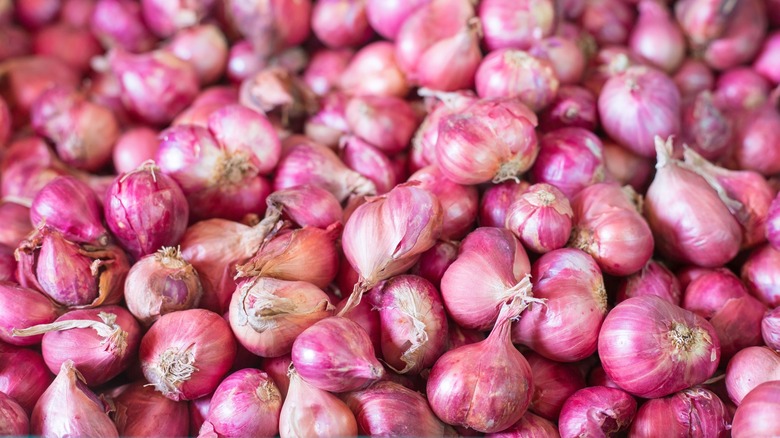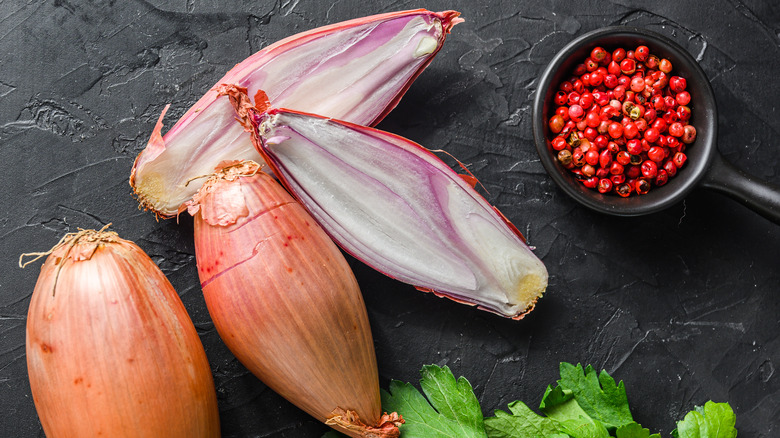How Shallots Became Associated With French Cooking
They're smaller, slightly sweeter, and a bit less pungent than onions, and they range in color from pink to purple — if you guessed a shallot, you're correct. There are quite a few members of the onion (or allium) family, including shallots, all onion varieties, garlic, spring onions, leeks, and chives, according to The Crazy Kitchen. While most of these family members can be found in cooking across all cultures, shallots seem to be favored most in French cuisine.
In fact, according to Karen and Andrew, there's such a thing as "French shallots." Eighty percent of all shallots grown in Europe are this variety, meaning they're grown in France and have a clean bulb free of whiskers. Also known as a grey shallot or griselle, this so-called "true shallot" are typically carefully cultivated but can be found growing wild in Asia (via UK Shallots). How did this one popular produce item become associated with one country?
Crusaders brought them to France
According to The Spruce Eats, it all started back in the 11th century when Greeks discovered shallots in the Middle East and brought them through Central and Southeast Asia to cultivate in Europe. Shallots became commonly used in French cuisine once they arrived in France, which is why the country lays claim to the tender veg. French shallots (Allium oschaninii) are taken so seriously in their region that, in the past, local farmers protested to raise awareness of the many "fake shallots" that were an engineered variety invading the market from the Netherlands (per Food Republic). Basically, a "faux shallot" is a hybrid type of shallot which includes the gene of regular onions, but it differs in size and taste compared to the traditional shallot.
While shallots have a special relationship to French cooking, the slightly sweet and subtle onion flavor underneath their parchment-like skin can transform the taste of vinaigrettes, crisp up for a crunchy salad or casserole topper, sauté to build a base for a delicious sauce, and much more.

